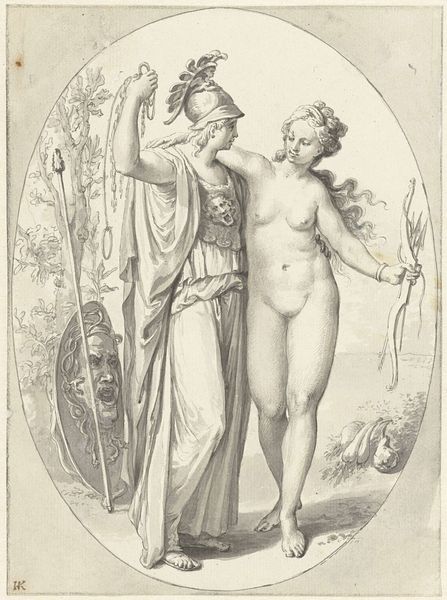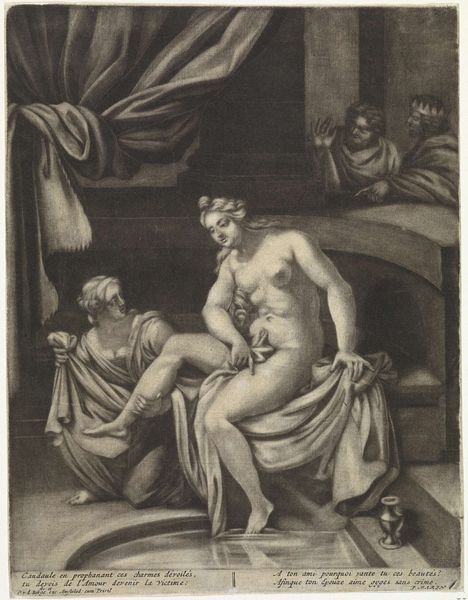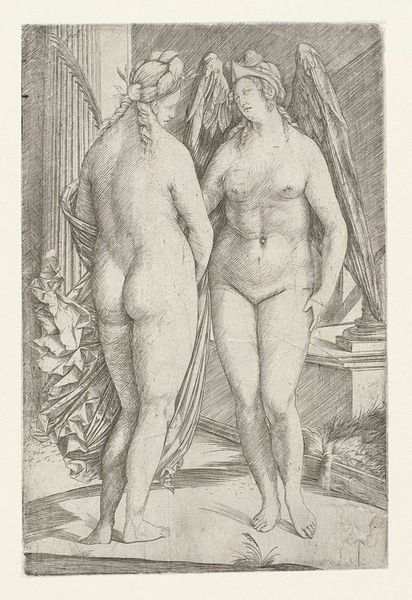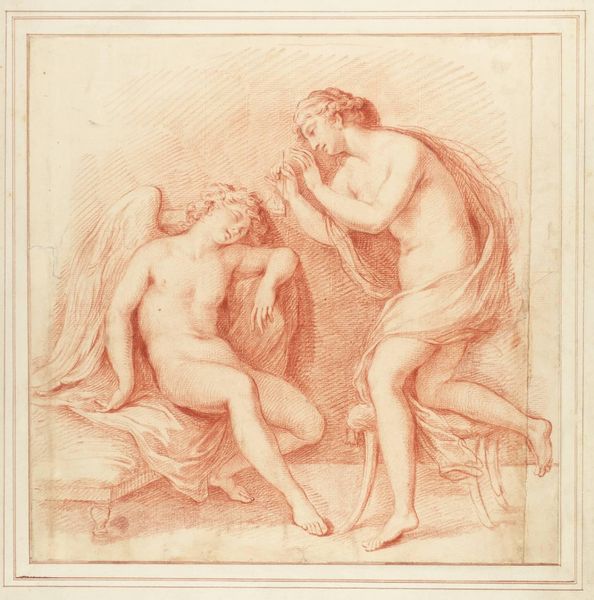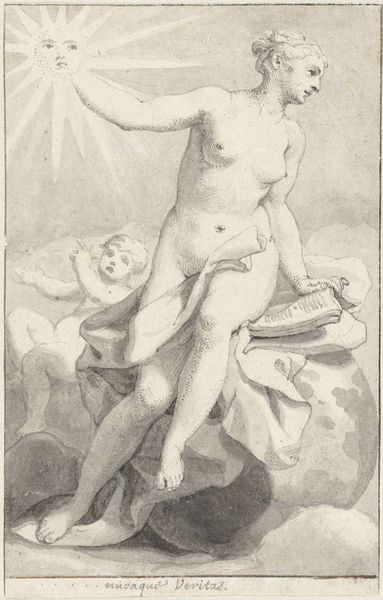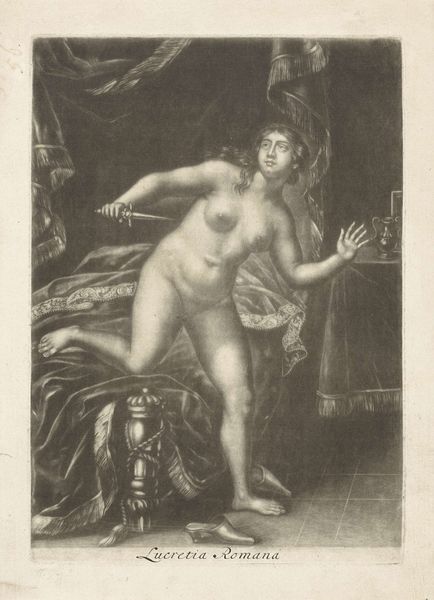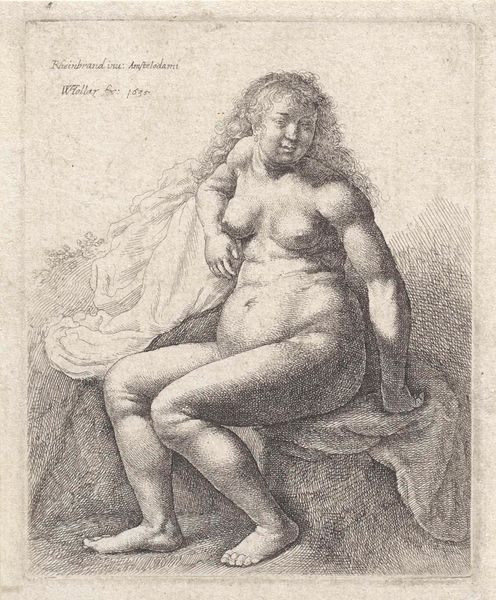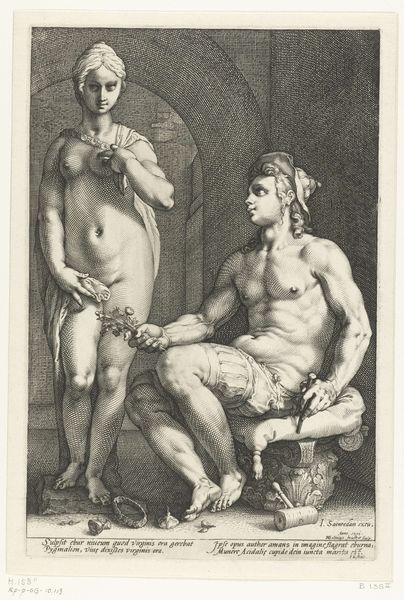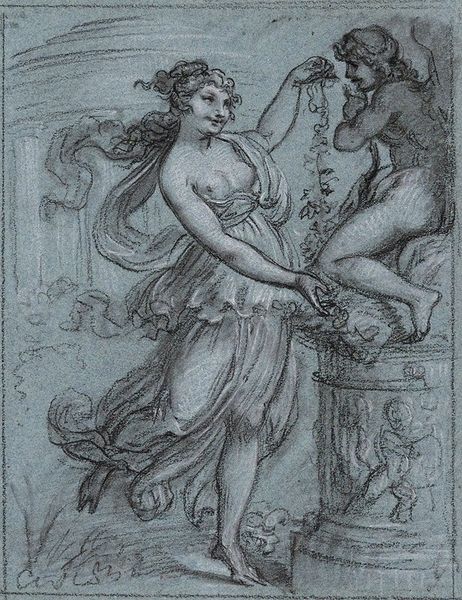
drawing, charcoal
#
drawing
#
neoclacissism
#
allegory
#
charcoal drawing
#
figuration
#
form
#
line
#
charcoal
#
history-painting
#
academic-art
#
nude
Copyright: Public Domain: Artvee
Curator: Anne-Louis Girodet's charcoal drawing, Pygmalion and Galatea, created around 1808, offers us a fascinating glimpse into Neoclassical interpretations of classical myth. What strikes you immediately about this piece? Editor: There's a striking stillness. Despite the dynamism of the subject – a sculpture coming to life – the overall impression is one of serene composure. The muted tones enhance that effect, contributing to the sense of restrained elegance, so typical of Neoclassicism. Curator: Indeed. And that stillness belies the quite revolutionary act taking place. Girodet’s approach, while formally quite academic, invites contemplation of societal constructs around creation and female agency. Pygmalion, a sculptor, creates a woman to his liking, embodying the male gaze's power over the female form. Editor: Absolutely. You can see Girodet meticulously employs line to define form and texture. Observe the contrasted textures: the smooth, idealized skin of Galatea against the drapery's flowing folds and Pygmalion's own rougher, almost frenzied rendering. It underscores that tension. Curator: Considering this piece was crafted during a time of upheaval with the rise and fall of Napoleon, one can interpret Pygmalion's act as a parallel to the creator imposing order, his own vision of beauty, onto a chaotic world, and perhaps controlling the destiny. Girodet seems to be interrogating who has the right to impose their ideal upon the other. Even little Cupid clinging to his leg, seemingly ready to encourage these actions. Editor: Yes, there’s a psychological charge beneath its surface, created using strictly formal choices of composition and contrasts, particularly in his unusual approach with shadow in a drawing—an innovation that marks Girodet's importance during this time. Curator: Seeing how the themes in this early 19th-century work about controlling image and creation of others is still very alive within art now, just goes to show you can look back and also consider the present day's narratives. Editor: Agreed; analyzing those choices, and considering its lines and tone help us appreciate it anew.
Comments
No comments
Be the first to comment and join the conversation on the ultimate creative platform.

